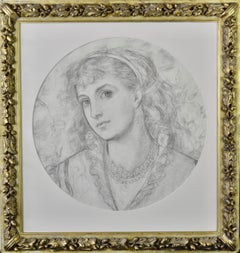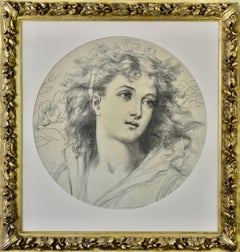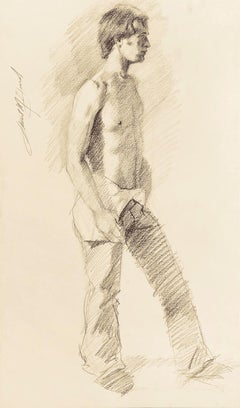Herbert Wilson Foster Art
Herbert Wilson Foster was born at Endon, Staffordshire on January 18, 1846. His father was a pottery artist and Herbert too worked in the industry as a tile designer for Minton. While at school in Hanley, he won medals for his art work and at the age of 24, won the silver medal at the Worshipful Company of Painter-Stainers. His talent won him a scholarship at South Kensington and he later went on to study in France and Belgium. Foster was a friend of George Heath, the Moorland poet who died at a young age and Foster drew the illustrations for a memorial edition of Heaths’ poems and designed his monument in St. Michael & All Angels Church, Horton. Foster lived at West Bridgford, just outside the city of Nottingham and married Rebecca Fisher from the village of Scarrington, Nottinghamshire. In 1891, Foster became a teacher at Nottingham Trent University, School of Art & Design and at his death in 1929, the principal said of him, "He was one of the most distinguished life masters in the country. He was certainly the best man we have ever had in that time. He was a brilliant student, and an exhibitor at the Royal Academy of Arts." Foster found time to exhibit his work at the Royal Academy of Arts from 1870–1899 these being genre scenes of daily life and his figures feature prominently in his paintings. He exhibited extensively between 1881–1917.
1870s Realist Herbert Wilson Foster Art
Pencil, Chalk
1870s Realist Herbert Wilson Foster Art
Pencil, Chalk
1970s Realist Herbert Wilson Foster Art
Paper, Graphite
1970s Realist Herbert Wilson Foster Art
Paper, Graphite, Conté
21st Century and Contemporary Realist Herbert Wilson Foster Art
Conté, Paper, Charcoal
1970s Realist Herbert Wilson Foster Art
Conté, Paper
1880s Realist Herbert Wilson Foster Art
Chalk
20th Century Realist Herbert Wilson Foster Art
Pencil, Paper
1970s Realist Herbert Wilson Foster Art
Conté, Paper
1970s Realist Herbert Wilson Foster Art
Foil
Mid-19th Century Realist Herbert Wilson Foster Art
Gouache, Watercolor, Pencil
1930s Realist Herbert Wilson Foster Art
Conté, Handmade Paper
1880s Realist Herbert Wilson Foster Art
Chalk
1880s Realist Herbert Wilson Foster Art
Paper, Pencil



